What Are the Costs of Installing an RV Inverter
- Additional Components and Accessories
- Labor Costs for RV Inverter Installation
- DIY Installation vs. Professional Installation
WBefore diving into the costs associated with installing an RV inverter, it’s essential to first understand what an RV inverter does and why it’s crucial for your RV setup.
What is an RV Inverter?
An RV inverter is a device that converts the 12V or 24V DC power from your RV’s battery or solar panels into 110V or 220V AC power, depending on the type of inverter you choose. This AC power is the same kind of electricity used in most household appliances, so installing an RV inverter allows you to use devices like laptops, refrigerators, microwaves, and other electronics while you’re on the road or camping off-grid.
Why Is an RV Inverter Important?
For most RV owners, an inverter provides the independence and convenience of using electrical appliances without being tethered to a shore power source. It allows you to enjoy modern comforts like air conditioning, heating, and cooking appliances, making your RV feel like a home away from home. Without an inverter, your RV would only be able to operate on DC power, which limits the types of appliances you can use and how long you can run them.
Factors That Influence the Cost of Installing an RV Inverter
The cost of installing an RV inverter can vary greatly depending on several factors. Understanding these variables can help you make an informed decision about the installation process and how much you should expect to pay.
Type of RV Inverter
One of the most significant factors that influence the cost of installation is the type of RV inverter you choose. There are three main types of RV inverters: pure sine wave inverters, modified sine wave inverters, and square wave inverters.
- Pure Sine Wave Inverters: These inverters provide the highest quality AC power, closely mimicking the power you get from the grid. They are ideal for running sensitive electronics like laptops, medical equipment, or appliances with motors. However, pure sine wave inverters tend to be the most expensive, both in terms of the initial cost and installation.
- Modified Sine Wave Inverters: Modified sine wave inverters are a more affordable option. They provide a less smooth and less consistent output compared to pure sine wave inverters but are still sufficient for many RV appliances. They tend to be cheaper to install but are not recommended for sensitive electronics or devices with motors.
- Square Wave Inverters: Square wave inverters are the least expensive and offer a very basic, unrefined power output. These inverters are rarely used in modern RVs due to their limited functionality and the potential damage they can cause to appliances. While square wave inverters are cheap to install, they are not typically recommended for most RV setups.
Power Capacity of the RV Inverter
Another key factor influencing the cost of an RV inverter installation is its power capacity. The power capacity of an inverter is measured in watts, and the higher the wattage, the more expensive the inverter will be.
- Small Inverters (1000-2000 Watts): These are typically sufficient for powering smaller devices like lights, laptops, and small kitchen appliances. The installation costs for these inverters are relatively low, typically ranging from $300 to $700, depending on the brand and model.
- Medium Inverters (2000-4000 Watts): If you plan to power more substantial devices, such as a microwave, coffee maker, or small refrigerator, you will need a medium-capacity inverter. These inverters typically cost between $700 and $1,500, with installation costs adding another $200 to $500.
- Large Inverters (4000 Watts and Above): For RVs with more substantial power needs, such as multiple air conditioners, large refrigerators, or other high-power devices, you’ll need a high-capacity inverter. These inverters can cost upwards of $1,500 to $3,000 or more, and installation can range from $500 to $1,500 depending on complexity.
Additional Components and Accessories
In some cases, additional components and accessories may be necessary to complete the installation of your RV inverter. Some of the common components include:
- Batteries: If your current RV battery system isn’t powerful enough to support your new inverter, you may need to upgrade to a larger battery bank or add more batteries. High-capacity batteries, particularly lithium-ion batteries, can cost several hundred to several thousand dollars.
- Battery Chargers: Depending on your setup, you may need to add a new battery charger or charging controller to ensure your inverter and batteries remain properly charged. These devices can range in price from $100 to $1,000 or more.
- Wiring and Fuses: The wiring and fuses required for the inverter installation can add another $50 to $300, depending on the size of the system and the complexity of the installation.
- Solar Panels (Optional): Some RV owners choose to add solar panels to charge their batteries, providing a renewable source of energy for the inverter. Installing solar panels can significantly increase the total cost of your RV power system, but it’s a great way to maximize off-grid capability.
Labor Costs for RV Inverter Installation
The cost of labor for installing an RV inverter varies depending on the complexity of the installation, the type of inverter, and the technician's hourly rate. Labor costs typically range from $50 to $150 per hour, and the total installation time can vary between 2 to 10 hours, depending on the complexity.
If you hire a professional RV technician to install the inverter, you can expect to pay anywhere from $200 to $1,500 in labor costs. Some RV dealers may offer package deals that include the cost of the inverter and installation, so it’s worth inquiring about these options when shopping around.
DIY Installation vs. Professional Installation
For RV owners with some technical expertise, it may be possible to install an RV inverter themselves. However, DIY installations come with their own set of challenges and risks, such as incorrect wiring or safety hazards. For beginners, it’s generally recommended to hire a professional to ensure that the installation is done correctly and safely.
Pros of DIY Installation
- Lower upfront cost, as you’ll only pay for the inverter and accessories
- Full control over the installation process
Cons of DIY Installation
- Risk of damaging the inverter or other components
- Potential safety hazards, especially when working with electrical systems
- Time-consuming process for inexperienced individuals
Pros of Professional Installation
- Proper and safe installation by experienced technicians
- Warranty coverage for both the inverter and installation work
- Potential for more efficient power setup
Cons of Professional Installation
- Higher overall cost due to labor fees
- Limited control over the installation process
In conclusion, the cost of installing an RV inverter depends on several factors, including the type and power capacity of the inverter, the additional components required, and the cost of labor. While smaller, lower-capacity inverters are more affordable, larger systems with high power capacity or additional accessories like solar panels and batteries can significantly increase the total cost of the installation.
If you’re considering adding an RV inverter to your setup, it’s important to factor in all the potential costs, including the inverter, accessories, and installation fees. Whether you choose a DIY route or hire a professional, understanding the costs involved will help you make an informed decision and ensure that your RV is equipped with the power it needs for your next adventure.

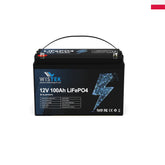
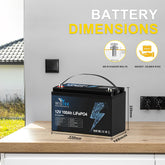


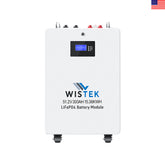
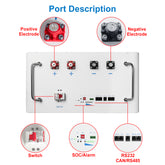
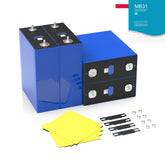

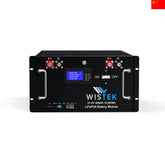
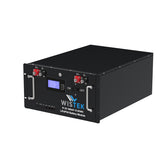



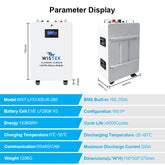
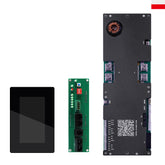

Leave a comment
All blog comments are checked prior to publishing